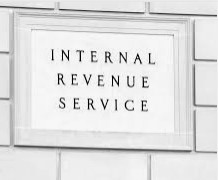 The case of Mulherin v Commissioner of Taxation [2013] FCAFC 115 decided by the Full Federal Court last week confirms that section 167 of the Income Tax Assessment Act 1936 is a weapon of mass reconstruction in the hands of the Australian Taxation Office (“the ATO”).
The case of Mulherin v Commissioner of Taxation [2013] FCAFC 115 decided by the Full Federal Court last week confirms that section 167 of the Income Tax Assessment Act 1936 is a weapon of mass reconstruction in the hands of the Australian Taxation Office (“the ATO”).
Mr Mulherin was born in Australia but spent some years developing his professional activities overseas. Following his return to Australia early in the 1990s he caused a Leichtenstein Foundation to be established. He was effectively both the founder and principal beneficiary of this structure.
The ATO became aware of the existence of the Foundation and of Mr Mulherin via information provided to it by a former employee of LGT Bank in Leichtenstein (who had stolen client records of a subsidiary of the bank).
It transpired that the central management and control of the Foundation was at all relevant times in Australia. The ATO sought to treat the income of the Foundation as having been derived by Mr Mulherin as a resident of Australia.
Mr Mulherin had lodged tax returns “…disclosing modest amounts of taxable income in each of the years between 1999 and 2003. He did not lodge returns in the 2004, 2005, 2006 and 2007 years of income”. No income was disclosed from the Foundation or investments with the LGT Bank.
The ATO utilised its powers under section 167 to “calculate” the taxable income of Mr Mulherin for the relevant years. The LGT documents they had obtained from the thief showed the Foundation’s balance in the LGT Bank to be approximately US$3.8 million at 31 December 1999 and approximately US$6 million at 31 December 2001. The ATO calculated the increase in the account to have been just over 51% over two years. It then extrapolated an annual rate of return on the original amount to be in the order of 25%.
The ATO used these scant figures to recalculate Mr Mulherin’s income for the 1999 – 2007 income years as a total of approximately A$26 million. In addition to the primary tax on that income (the top marginal rate for 1999-2006 was effectively 48.5%, making a primary tax bill of some A$11 million), additional penalties imposed amounted to nearly A$11.3 million.
The Federal Court recognised that the ATO’s calculations and assessments were undeniably incorrect. However, the case precedents (e.g., Commissioner of Taxation v Dalco [1990] HCA 3) have established that to overturn a section 167 assessment, a taxpayer must be able to show what his correct income actually is (virtually to the last dollar), for each of the years under review.
That is an onerous burden. It is a particularly onerous burden when the taxpayer involved has engaged in offshore tax planning that relies primarily upon secrecy for it’s effectiveness.
This case yet again demonstrates the dangers of using unsophisticated offshore tax and estate planning strategies. The clear lesson is, if you are not prepared to spend the time and money to obtain high level professional advice – don’t do it. Relying upon secrecy alone just won’t survive an attack by any competent revenue authority.




















Recent Comments